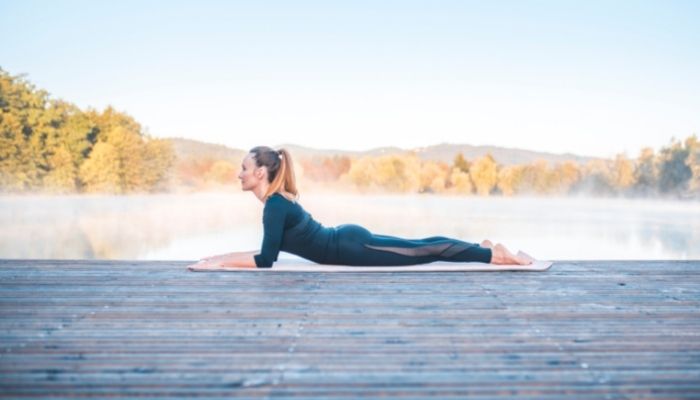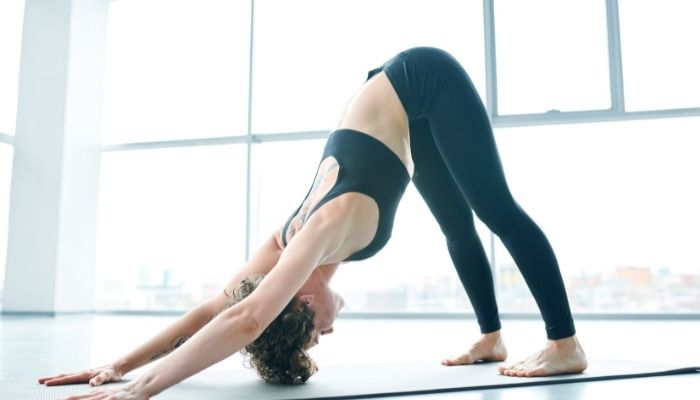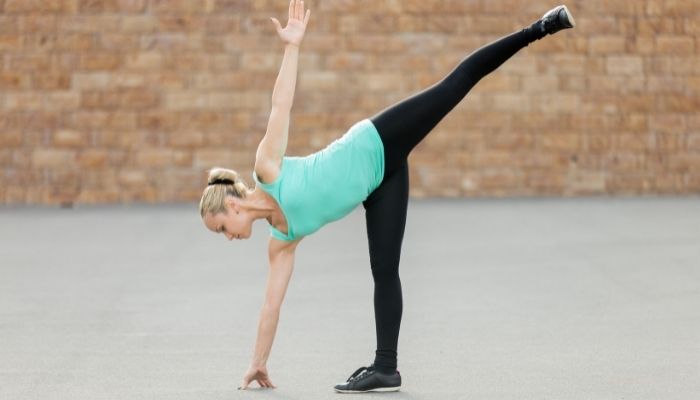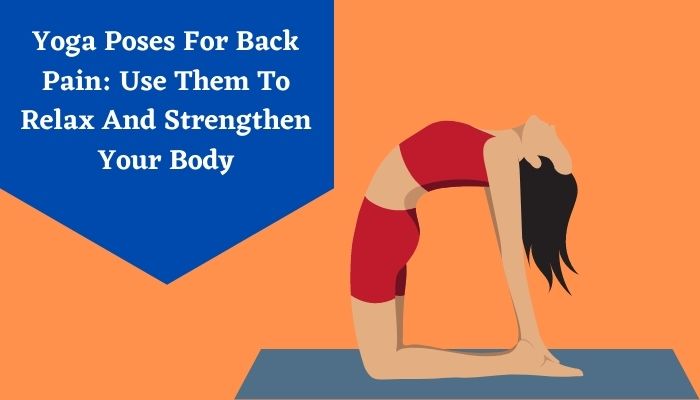Yoga is a mind-body therapy that is widely recommended for alleviating back pain and the associated tension. The appropriate positions can help you relax and strengthen your body at the same time.
Even a few minutes of yoga practice per day might help you become more aware of your body. You can utilize this knowledge to re-establish balance and alignment in your life.
10 Best Yoga Poses for Lower Back Pain Relief
Aside from the more usual medical causes of lower back pain, such as a bulging disc or osteoarthritis, extended sitting or standing (yeah, we’re looking at all of you working from home!) is a major cause of lower back discomfort. The less you use your stabilizing muscles, the weaker they become and the more difficult it is for them to do their job when you need them, resulting in pain.1. Sphinx Pose

The sphinx stance relaxes your lower back muscles and is occasionally recommended for persons suffering from sciatica caused by a bulging disc. Use a yoga mat or a large towel to lie down on the ground.
- Lie down flat on your stomach, legs straight. Keep your forearms tucked in close to your sides on the ground next to you.
- Tighten your legs and push your chest off the ground with your arms as you inhale. Keep your forearms and palms on the ground.
- Keep your hips, legs, and feet in touch with the ground, and keep your elbows positioned squarely beneath your shoulders.
- Hold this stance for 5 seconds before lowering your torso to the ground gently.
2. Modified Dog Pose

A downward-facing dog is a popular yoga pose, but it can be challenging to master, especially for those with aching hands or wrists. Here’s a somewhat different version that might be easier on the body:
- Take a step back and face a wall. Place your hands on the wall anywhere between your waist and your chest.
- Stand with your feet hip-width apart and walk away from the wall slowly, maintaining your hips above your feet and your hands placed on the wall.
- Come to a complete stop after your arms and spine create a straight line, maintaining your back as flat as possible.
- You should be able to feel a stretch in your back.
- Hold this stance for 30 seconds before slowly walking forward to exit it.
3. Yoga For Sciatica

Sciatica pain is characterized by a sharp, throbbing, or burning sensation that travels down your leg.
Forward bends in a seated or standing position (except Downward-Facing Dog) should be avoided since they put additional strain on the pelvic and lower back. From a supine position, you can do forward bends (lying down, faceup).
4. Child’s Pose

A child’s pose is a wonderful method to connect with your body and calm it. It promotes flexibility and openness in your hips, thighs, and lower back by lengthening and stretching your spine.
Place a pillow or bolster under your thighs, chest, and forehead for added support.
- Get down on your hands and knees. Sink your hips back onto your heels by bringing your knees together.
- Extend your arms in front of you or rest them against your body.
- As you sink deep into your thighs, allow your torso to relax completely.
- Concentrate on deepening your breath to relieve any tightness or sensations.
- Stay gripped for up to 5 minutes.
5. Half-Moon Pose

Half Moon Pose is a body strengthening, stabilizing, and balancing pose. It stretches your spine, glutes, and thighs while increasing flexibility and relieving tension.
By doing this stance against a wall, you can keep your balance. A brick can be placed under your hand.
- Begin in a standing position with your right foot in front, such as Triangle.
- Slightly bend your right knee and shift your weight to your right foot.
- Make a fist with your left hand and place it on your hip.
- As you reach your right hand to the floor in front of and to the right of your right foot, slide your left foot forward a few inches.
- Press out through your left heel as you lift your left leg parallel to the floor.
- Rotate your torso and hips open.
- Raise your left hand toward the ceiling and turn your eyes to go deeper.
- This stance can be held for up to a minute.
- Return to the starting position by bending your right leg and lowering your left leg to the floor slowly.
- Switch sides and repeat.
Top 2 Yoga for Upper Back Pain
Tightness in the upper back is common. Because the thoracic spine is linked to the ribs and sits in the centre of the vertebral column, it is naturally less mobile than the cervical spine above and the lumbar spine below. Poor posture is caused by constant sitting and staring at electronics, resulting in stiffness in the shoulders, chest, and neck.1. Double V Pose
The rhomboids, trapezius, latissimus dorsi, shoulders, and neck are all relieved in this stance.- Lie down on your stomach with a block at the top of your stance.
- Raise yourself onto your forearms and contract your abs.
- Cross your right forearm over your mat with your fingers pointing to the left side.
- Cross your left forearm over your right forearm and point your left fingers to the right side of your mat. Make sure your chest is directly over your forearms.
- Walk your fingers towards the mat’s edges, crossing your arms directly underneath your chest.
- Press your forehead against the block and close your eyes. Switch sides after holding for 8 breaths.
2. Eagle Arm
The space between the rhomboids, traps and rear delts is relieved in this binding stance.- Kneel on your mat, legs together, hips resting on heels. Activate your abs.
- Wrap your right arm over your left arm, then wrap your forearms around your hands to bring them together. Place each hand on the opposite shoulder if this isn’t practicable.
- Raise your elbows to shoulder height and squeeze your forearms forward. A stretch should be felt in the upper back and shoulders.
- Take 8 deep breaths and hold them.
Top 2 Yoga Stretches for Lower Back
Lower back stretches should be a crucial part of your movement mix because the lower back can be a sensitive place for many people. That’s true whether you’re looking for lower back pain alleviation or just want to strengthen your lower back muscles with mild stretches. That’s where yoga for the spine—as well as the rest of the back—comes in.1. Reclined Supine Twist
This is a terrific stretch for the lower back, and if you’re stiff, it can help relieve pain. Twisting movements, on the other hand, can irritate the lower back in certain persons. Stop doing this stance if it starts to ache. If you’re very tight, consider putting a cloth underneath your knees to help you relax into it.- Lie down flat on your back.
- Cradle your knees to your chest. Then, as you twist your torso in the opposite direction, lower both knees to one side.
- As you draw your knees and hips toward the floor, try to keep them in line with each other and your chest as square to the ceiling as possible.
- Hold this stretch for 30–60 seconds before switching sides.
2. Thread The Needle
For a healthy back, rotation of the upper body and thoracic spine is essential, and this mild yoga stretch is great for doing so safely.- Begin in a tabletop position, with your shoulders directly over your wrists and your hips directly above your knees.
- With your palm facing up, reach your right arm underneath your left and across your body.
- Gently lean towards your right side while bending your left elbow; you should feel a stretch at the back of your right shoulder.
- Hold this position for 1 minute before switching to the left arm.
Conclusion
Yoga is, at its foundation, a form of physical movement, and injuries, like any other type of exercise, can occur, particularly in the back. The most common issues arise when people do not use proper form and pace when entering a yoga posture, instead “dropping” into it without gradually “lengthening” into it.In yoga, you should first use your muscles to develop a solid foundation for movement, then gradually lengthen and stretch your body while maintaining proper form. The goal of a sitting spinal twist, for example, which can be quite beneficial for low back pain, is not to rotate as quickly and as widely as possible.


